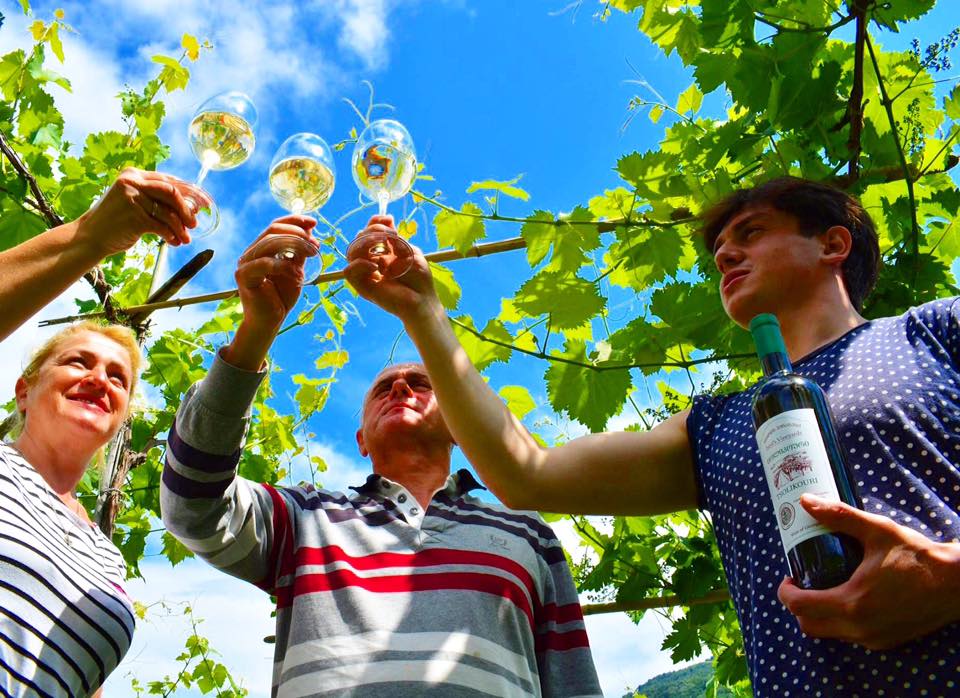Georgian history has been inseparable from the history of winemaking for more than 8000 years. Archaeological excavations have confirmed that Colchis and inland Iberia cultivated vines as early as the 6th millennium BC.
If you’re planning to try winemaking in Georgia, you’re in for a treat. You will find out a lot about the old winemaking traditions and vessels such as Qvevri. A qvevri is an ancient Georgian wine vessel made from clay and buried in the ground for fermentation, storage, and perfect aging of wine.
Qvevri even holds UNESCO Intangible Cultural Heritage status and symbolizes the unique character of Georgian wine.
You’ll find a lot of rural businesses offering winemaking tours. The recent increase in interest from tourists has encouraged farmers to make it a tourist attraction. Visitors experience handling Georgian wine making traditions, and farmers take their part in sustainable tourism development.
Today, over 500 varieties of grapes grow in this small country, and Georgian wines are well known for their unique properties and characteristics.
Learning about Georgian wine is closely linked with learning about the different grape varieties and the regions where they are cultivated. The most prominent wine region of Georgia is Kakheti, where the largest volumes of grape varieties grow.
Georgian people have found other uses for grapes as well. Grape pomace is used as a base for Cacha – a very strong local brandy. You can also make a sweet Pelamushi or Tatara (in some regions) with grape juice and flour. Locals eat Pelamushi/Tatara alone or make Churchkhela (sweets with walnuts).
Those links might be handy too:
Want to find out more about Georgian wine? Read the wine route guide book
If you’re a visitor in Armenia, we’re sure you will hear about Armenia’s rich history of winemaking at least a few times.
Excavations witness that wines were being made here still in XI—X centuries before our era. Yet Strabon and Heradot wrote about Nairian land wines.
Modern Armenian winemaking began in 1887, and since then, it has seen changes and development through the years. In 2010 a new wave of winemaking started in Armenia – a so-called renaissance. The country has presented modern, bright wines, which make their way in “golden” ratings to uncompromised critics such as Robert Parker and Jancis Robinson.
The center of Armenian winemaking is ancient Areni. Practically the whole territory around the village is covered with vineyards. You can even see smaller vineyards inside the village.
Winemaking has brought the development of tourism and many other benefits to the country and local people. If you visit Areni, you will notice how every household has gardens and is slowly converting into vineyards.
If you’re a wine lover, we’re sure you will find this rural activity enjoyable. While going on a trip to the Armenian vineyard cradle, make sure to visit the “Old Bridge” vineyard and taste unique local wine.
Azerbaijan, an ancient cradle of viniculture, is once again coming of age. Beautifully balanced wines are made with love from grapes grown on Caucasian slopes, soaked in sunshine and soothed by Caspian breezes. Come… Taste… Delight…
Learn more about Azerbaijan Wine by clicking here.
Or follow the links below:













